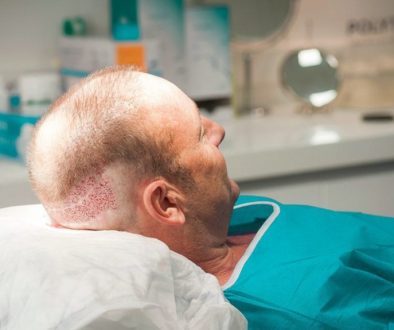The Importance of Long Term Hair Restoration Planning for Young Balding Men
Hello, I’ve been considering a hair transplant for a few years now. I’ve had a high hairline my entire life and seem to have a stable hairline. But my hair (or lack thereof) is something that I am very self-conscious about. I’m set on getting a hair transplant. My concern is my age (22). I’ve had one physician tell me I’m too young for a procedure and that he’d only be willing to reconsider once I’m in my late twenties. This isn’t good enough. What should I do?
This hair loss question was posted directly to Dr. Raymond Konior of Chicago, IL, who is a member of the Coalition of Independent Hair Restoration Physicians. See his professional answer below.

I agree that hair restoration should be approached with caution in young men since it is difficult to predict the final hair loss pattern in someone who may continue to undergo thinning for many more decades. However, there are some young men who make very good candidates depending on their family history of hair loss and on their individual expectations. First off, it is much better to have a family history with little evidence of advanced hair loss patterns. Although the family history is never a guarantee of what one’s future holds, the evidence it provides certainly helps when attempting to make a long term prediction for a young man.
For example, a family full of men with class 7 hair loss patterns would provide a warning sign against any heroic attempt at surgical hair restoration. Second, your specific goals for today and the future are key to determining if this is right or wrong for you. My recommendation, young or old, is that the frontal hairline be prioritized over the crown since it has the highest impact on improving one’s appearance. The limitation of treating someone with extensive baldness is graft availability. The economics of hair replacement shows that the demand (bald area) is much higher than the supply (donor area), making it impossible to provide a full restoration over the entire balding scalp. Plain and simple, extensively bald men, i.e. class 6 and 7, do not have enough grafts available to recreate a full head of thick hair. Ultimately, men with extensive baldness have to accept some degree of thinning hair or balding – preferably in the crown region. The crown, as compared to the frontal region, is much less important with respect to the impact it has on altering one’s appearance. The frontal hairline frames the face and provides a dramatic change in one’s appearance. You may be a good candidate if you believe that your frontal hairline is, and will always be, your highest priority, and that you can accept some thinning in the crown should that eventually occur with age. Unfortunately we have no crystal ball that will reveal the future of your scalp, so you simply need to think about the possibilities that could follow your decision at this time. Finally, because surgical hair restoration will do nothing to stop the progression of the genetically based process of male pattern baldness, you need to fully understand the importance of using Propecia (finasteride) on a long-term basis as a means of stabilizing those hairs hair which will remain at risk for future thinning.
Raymond Konior, MD
—
Bill
Associate Publisher/Editor
Technorati Tags: hair transplant, hair loss, hair restoration, hair loss pattern, family history of hair loss, surgical hair restoration, baldness, hair replacement, bald, balding, thinning hair, male pattern baldness



